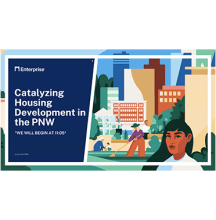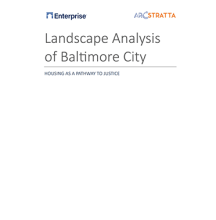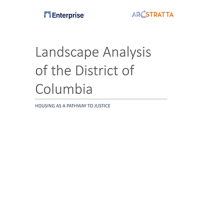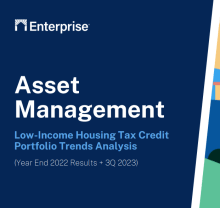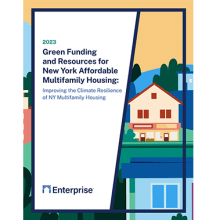.
Report
Barriers & Opportunities to Creating Low-Density Multifamily Housing
January 26, 2024
Explore the potential positive outcomes of allowing low-density multifamily (LDMF) development in areas previously reserved for single-family development, as well as prominent regulatory and financing challenges to creating LDMF housing.
Training
Webinar: Pathways to Catalyzing Housing in Washington
January 25, 2024
Enterprise Pacific Northwest reviewed grant opportunities and technical assistance programs to catalyze housing across Washington State.
List
Green Communities in State Qualified Action Plans
January 10, 2024
Listing of Green Communities in State Qualified Action Plans
Report
Housing as a Pathway to Justice: Landscape Analysis of Baltimore City
January 10, 2024
Enterprise engaged in a landscape assessment of the intersection of the housing and criminal legal system in Baltimore City to address this need for individuals with legal system involvement.
Report
Housing as a Pathway to Justice: Landscape Analysis of the District of Columbia
January 10, 2024
Enterprise engaged in a landscape assessment of the intersection of the housing and criminal legal system in the District of Columbia to address this need for individuals with legal system involvement.
Report
Low-Income Housing Tax Credit (LIHTC) Portfolio Trends Analysis Report
January 3, 2024
Portfolio Trends Analysis provides information on our asset management, drawing from our year-end 2022 + 3Q 2023 financials, and reviews and analyzes key trends.
Training
Accessing Affordable Housing Funding Resources in the US Virgin Islands
December 6, 2023
Learn more about accessing affordable housing funding resources in the U.S. Virgin Islands.
Training
Green Funding and Resources for New York Affordable Multifamily Housing
December 5, 2023
Enterprise created this guide to inform affordable multifamily housing owners of available financing programs and to help identify those that would be most appropriate for their properties.
Training
2023 FBDI Summit: The Evolution of a Movement
November 27, 2023
Learn more about key insights from Enterprise's 2023 FBDI Summit - Faith-Based Community Development: The Evolution of a Movement.
Term Sheet
Denver Regional TOD Fund Term Sheet
November 7, 2023
The Denver Regional Transit-Oriented Development Fund provides financing for the acquisition of property alongside transit corridors for the preservation or development of affordable homes and community facilities in the Denver Metro Area.
